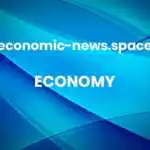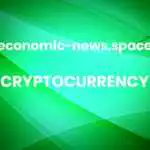Jerome H. Powell, the Federal Reserve chair, told lawmakers on Wednesday that the central bank is poised to lift interest rates at its meeting this month as it tries to cool down high inflation — saying that while Russia’s invasion of Ukraine is ramping up economic uncertainty, it isn’t yet shaking the Fed off its course.
Mr. Powell, testifying before the House Financial Services Committee, said the economic path ahead remained unsettled as Russia invaded Ukraine and the world reacted. He outlined with more clarity than usual how the Fed is thinking about policy in the coming months, saying, “We are going to avoid adding uncertainty to what is already an extraordinarily challenging and uncertain moment.”
With inflation running hot, the labor market showing strength and the economy growing rapidly, the Fed’s leader said he thought a quarter-point interest rate increase would be appropriate at the central bank’s meeting, which will conclude on March 16. He expects the Fed to make a “series” of increases this year. And he thinks officials will agree to a plan for shrinking their balance sheet bond holdings in coming months, as they had been planning to do.
“The question now really is how the invasion of Ukraine, the ongoing war, the response from nations around the world — including sanctions — may have changed that expectation,” Mr. Powell said. “It’s too soon to say for sure, but for now I would say that we will proceed carefully along the lines of that plan.”
Mr. Powell emphasized that flexibility was critical, because it was too soon to know what today’s geopolitical tumult would mean for the American economy.
Economists have said the conflict is likely to push up gas and other commodity prices, further elevating inflation — already, oil prices have shot higher. But at the same time, a combination of higher fuel costs and wavering consumer sentiment could be a drag on economic growth. Given the unclear effects on the American economy, Mr. Powell said, the Fed will need to remain “nimble.”
The Fed chair and his colleagues must balance the risks that Ukraine poses to both inflation and growth against another pressing reality: Price gains in America had already been coming in high for about a year. Fed policymakers, who are tasked with maintaining stable prices, want to make sure that those quick increases do not become a permanent feature of the economic backdrop.
Understand Inflation in the U.S.
- Inflation 101: What is inflation, why is it up and whom does it hurt? Our guide explains it all.
- Your Questions, Answered: We asked readers to send questions about inflation. Top experts and economists weighed in.
- What’s to Blame: Did the stimulus cause prices to rise? Or did pandemic lockdowns and shortages lead to inflation? A debate is heating up in Washington.
- Supply Chain’s Role: A key factor in rising inflation is the continuing turmoil in the global supply chain. Here’s how the crisis unfolded.
“The game plan is to prevent recent high inflation outcomes from persisting,” Michael Gapen and his colleagues at Barclays wrote in a research report, summing up the crux of Mr. Powell’s testimony.
Prices are increasing at the fastest pace in four decades, picking up by 7.5 percent over the year through January in the closely watched Consumer Price Index and by 6.1 percent in the Fed’s preferred inflation gauge, the Personal Consumption Expenditures index. The central bank aims for 2 percent inflation on average over time. Mr. Powell attributed the stubbornly rapid increases to strong consumer demand, especially for goods, that has “collided” with limited supply.
“Admitting that inflation — proclaiming that inflation — is far too high, and that we are committed to using our tools to get it back down, it’s really about very, very high demand,” Mr. Powell said. “It’s a very different kind of inflation story than we’ve had in the past, but it’s one we have to deal with, and we will deal with it.”
Mr. Powell said the Fed expected inflation to cool off this year as it raised interest rates, government pandemic relief spending faded and supply constraints cleared up. But officials are also closely monitoring factors that could keep it high.
If price gains do not begin to come down in 2022, he said the central bank would be prepared to “move more aggressively” and make a larger-than-usual rate increase. Markets have expected that the Fed could increase rates, which are near zero, by half a percentage points at some meetings.
“We will use our policy tools as appropriate to prevent higher inflation from becoming entrenched while promoting a sustainable expansion and a strong labor market,” Mr. Powell said.
His testimony underscored the tense political and economic moment that confronts the Fed — and policymakers across Washington — as a war rages overseas and inflation dominates headlines and spooks consumers at home.
Today’s economy does have many bright spots, which Mr. Powell emphasized: Growth has been stronger than in many other advanced economies, and jobs are plentiful, creating opportunities for workers.
“The labor market is extremely tight,” Mr. Powell said. He added that “employers are having difficulties filling job openings, an unprecedented number of workers are quitting to take new jobs and wages are rising at their fastest pace in many years.”
Inflation F.A.Q.
What is inflation? Inflation is a loss of purchasing power over time, meaning your dollar will not go as far tomorrow as it did today. It is typically expressed as the annual change in prices for everyday goods and services such as food, furniture, apparel, transportation and toys.
But that strong progress has been partly obscured by the quickly-increasing prices, which are chipping away at wages for many workers. Average hourly earnings growth has struggled to keep up with price increases in recent months.
President Biden called fighting high prices his “top priority” in his State of the Union address on Tuesday night. But while the White House has suggested changes that it and Congress could make to help to bring more supply into the economy — be it improving ocean shipping or fostering more domestic manufacturing — they would probably take time. When it comes to controlling inflation by slowing down demand, the Fed has primary responsibility.
“Inflation is too high, we understand that, and we’re working on it — it’s going to take some time, but we’re going to get it back under control,” Mr. Powell said. “By the way, we’re seeing this everywhere in the world. We’re seeing it more in the United States, because our economy is stronger, but we’re seeing it everywhere in the world.”
It is the case that pandemic-era price increases have proved surprisingly quick across much of the world.
Fed and White House officials, along with most private-sector economists, expected the pickup in the United States to slow down promptly last year. Instead, waves of coronavirus infections kept factories shut down, shipping routes remained clogged, consumer demand remained abnormally tilted toward goods and away from services, and costs continued to climb.
Now, as the price increases broaden beyond pandemic-affected goods and begin to push up rent and other service costs, officials are intently focused on bringing inflation down.
But the Fed is navigating the dangers while many officials on its board exist in a sort of political limbo. Mr. Powell, whom Mr. Biden has renominated to a second term as chair, is technically serving on a pro tempore basis as he awaits Senate confirmation — a vote that has been delayed as Republicans boycott one of Mr. Biden’s other nominees to the Fed.
He will testify on Thursday before the Senate committee that is holding up his nomination and those of his would-be colleagues. While Mr. Powell steered clear of talking about the nominations on Wednesday, Mr. Biden addressed them in his remarks on Tuesday night.
“Confirm my nominees to the Federal Reserve, which plays a critical role in fighting inflation,” the president entreated.
Source: Economy - nytimes.com



